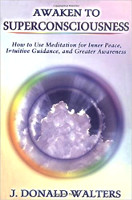
Image by Sven Lachmann
Narrated by Marie T. Russell.
How long should you meditate? The first rule is, Don't be ruled by what others do. What works well for them may not work for you. Accept that in certain ways you are unique. Intensity of effort is far more important than the time spent in meditation.
Here are a few general guidelines:
Enjoy Your Meditation Practice
Never meditate to the point of mental fatigue, strain, or boredom. Enjoy what you do. Enjoy every aspect of your life -- not an easy thing to do if one thinks about the aspects individually, but not so difficult if you concentrate on enjoying the inner Self. If you feel joy in meditation, stop meditating when the joy begins to diminish. One rule for right eating is to leave the table a little hungry. Apply this rule to meditation. In that way, you'll always look forward to your next time for meditation.
On the other hand, make an effort to meditate a little longer at least once a week. Gradually you'll break the habit of thinking you can meditate only for short periods. The greatest difficulty, in long meditations especially, is physical tension. Make an extra effort to keep your whole body relaxed.
Regularity: Key to Meditation Success
As a general guideline, I suggest you try to meditate at least half an hour twice a day -- in the morning after you get up, and in the evening before going to bed. It is better to meditate a few minutes with deep concentration than a whole hour absentmindedly. More over, I don't mind bargaining with you! For although five minutes, let's say, isn't much for anyone who has developed a taste for meditation, it may be all you feel you can spend in the beginning. So be it! Think of meditation, if you like, as daily spiritual hygiene. You brush your teeth, bathe, and brush your hair every day: Why not add to that routine five minutes of meditation?
You'll come to enjoy meditating, in time. Then you'll find yourself meditating longer because you want to, and not because someone is nagging you to do so. But if you think you're too busy, here's something to think about: You can always find the time for something you enjoy doing, can't you? In time, you'll wonder how you ever lived without meditating daily. And the answer, of course, will be: You didn't. What you did, that is, wasn't really living.
Do Not Force Yourself to Meditate
Be natural in your efforts. Make haste slowly, as the saying goes. Don't force yourself to meditate when you'd very much rather be doing something else.
At the same time, don't stop meditating altogether with the excuse that you have other things to do. Remember, there's only one direction to go that makes any lasting sense: toward your own Self, in superconsciousness. No substitute will ever work for you; it's never worked for anyone. No appointment is more important than your appointment with -- not death -- life.
Be a little stern with yourself. Success won't come to people who never try, Only bear in mind that tension is counterproductive. In meditation, concentrate first of all on relaxation.
Remember this also: The more you meditate, the more you'll want to meditate; but the less you meditate, the less you'll enjoy doing it.
Another rule: As soon as you sit for meditation, get "down to business." Don't dawdle, as if telling yourself, "Oh, I have a whole hour, so what's the rush?"
Be regular in your hours and practices of meditation. Saying that reminds me of a typewriter I bought when I was seventeen. At the time I also bought an instruction manual that explained the touch system. For a week or two I practiced the exercises in the manual assiduously mastering the system to the point where I finally learned to type quite rapidly. At that time, however, I was so eager to begin using the touch system that I ignored the exercises for learning the numerals. "I'll learn them," I told myself, "as I go along." The result? Today, more than fifty years later, I still need to look at the number keys when I want to use them.
So -- be specific in your practices. Don't tell yourself they'll just sort themselves out someday by some process of osmosis.
It is a good practice to meditate at the same hours every day. Routine conditions the mind. You'll find yourself wanting to meditate whenever those hours return. It will be much easier, then, to set all distractions aside.
For Success: Stick to Your Meditation Routine
Stick to your routine as best as you can. To help you in creating one, here are a few suggestions:
1) As soon as you sit to meditate, pray for depth and for guidance in your meditation. Pray also for peace for all humanity. Don't isolate your sympathies from others; embrace all in your divine love.
2) Chant and/or repeat affirmations, according to your personal predilection.
3) Tense and relax the whole body two or three times. Inhale before tensing, exhale with relaxation. This practice will help relax you mentally, as well as physically.
Carrying the Peace of Meditation With You
After meditation, don't strip your mental gears by plunging hastily into outer activity. Try to carry the meditative peace into everything you do. To develop this habit, it may help to begin with outward activities that don't involve your mind too much. While doing them, chant inwardly to God. The walking meditation is an excellent practice for bridging the gap between meditative peace and outward busyness. If you can't devote time to walking calmly after meditation, try doing things slowly for a bit, consciously bringing peace and energy into your muscles and bodily movements.
As a focus for your devotion, you may find it helpful to set up an altar in your place of meditation. Include pictures on the altar, if you like, of saints, or of images of God, or of infinite light and space. (You may even find photographs of stars and galaxies helpful, as reminders, of the vastness of space.)
A helpful practice also, if it pleases you, is the burning of incense as a devotional offering. The sense of smell is closely related to the memory faculty. You may recall, for example, catching in some fleeting scent a reminder of some childhood episode that awakened a host of associated memories. Incense, when used regularly in meditation, will help to create meditative associations in your mind, and bring you more quickly, therefore, to inner calmness.
Meditating in Calm Quiet Places
Generally speaking, it is best to meditate in quiet places, and at quiet times of the day. It is also good occasionally, however, to discipline the mind. Don't pamper it. You may even like to meditate, sometimes, in noisy places, as a mental discipline. Don't sit where people will see you and wonder what you're doing. Or, if the place is public, don't sit in such a way as to call attention to yourself. In this case, you might practice looking ahead of you with open eyes.
One way of becoming virtually invisible in public is to put out the thought "I'm not here." Put out a vibration of non-being -- somewhat along the principle of modern noise-cancellation technology where sound waves are nullified by projecting sounds of an opposite wave pattern. Obliterate "people-consciousness" from your mind. You'll be surprised to how little an extent people notice you. Quite possibly they won't notice you at all: That is, they may see you, but they won't observe you.
Wait two or three hours, if possible, after a heavy meal before beginning meditation. If this delay is impossible, however, or inconvenient, don't worry about it. Obstacles, if unavoidable, should be welcomed: They help to strengthen the will power.
Be more conscious of living in a world composed of energy and vibrations. Remind yourself always that you are not the body: You are consciousness working, through energy, to animate the body.
In Meditation, Be Happy!
Above all in meditation, be happy! If you want to experience peace, meditate peacefully. If you want to know love, offer love first, yourself.
It isn't that super-conscious states can be created by right attitudes. They don't appear by command performance of the conscious mind, but are the fruits, rather, of right meditation. However, you can hold yourself in readiness for those experiences by placing yourself on their "wavelength," instead of clinging with "scientific objectivity" to opposite states of consciousness.
Reprinted with permission of the publisher,
Crystal Clarity Publishers.
©2000. www.crystalclarity.com
Article Source
Awaken To Superconsciousness: How to use meditation for inner peace, intuitive guidance, and greater awareness
by J. Donald Walters
 Many people have experienced moments of raised consciousness and enlightenment or superconsciousness but do not know how to purposely enter such an exalted state. Superconsciousness is the hidden mechanism at work behind intuition, spiritual and physical healing, successful problem solving, and finding deep, lasting joy.
Many people have experienced moments of raised consciousness and enlightenment or superconsciousness but do not know how to purposely enter such an exalted state. Superconsciousness is the hidden mechanism at work behind intuition, spiritual and physical healing, successful problem solving, and finding deep, lasting joy.
Through meditation, chanting, affirmation, and prayer, readers will learn how to reach this state successfully and regularly and how to maximize its beneficial effects. Awaken to Superconsciousness provides a comprehensive, easy-to-understand routine to help people tap into their wellspring of creativity, unlock intuitive guidance, and hear the silent voice of their soul.
Info/Order this book.
About The Author
 Donald Walters, 1926-2013, (Swami Kriyananda) has written more than a hundred books and pieces of music., He has written books on education, relationships, the arts, business, and meditation. For information about books and tapes, please write or call Crystal Clarity Publishers, 14618 Tyler Foote Road, Nevada City, CA 95959 (1-800-424-1055.http://www.crystalclarity.com.
Donald Walters, 1926-2013, (Swami Kriyananda) has written more than a hundred books and pieces of music., He has written books on education, relationships, the arts, business, and meditation. For information about books and tapes, please write or call Crystal Clarity Publishers, 14618 Tyler Foote Road, Nevada City, CA 95959 (1-800-424-1055.http://www.crystalclarity.com.
Swami Kriyananda is the founder of Ananda. In 1948, at the age of 22, he became a disciple of Paramhansa Yogananda. He bought property in Northern California in the late 1960’s and started Ananda Village. Now there are several more communities, including one in India and one in Italy, and many more centers and meditation groups. To visit the website of Ananda, visit www.ananda.org.




























